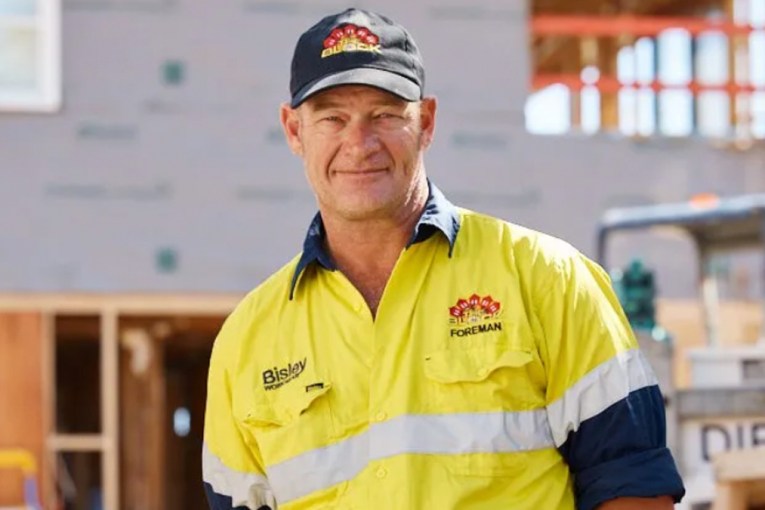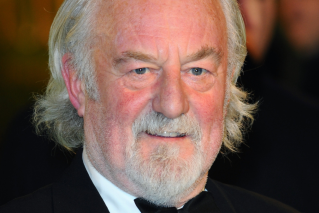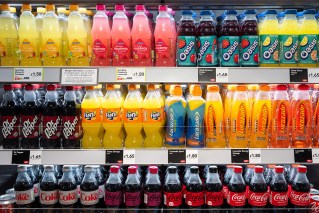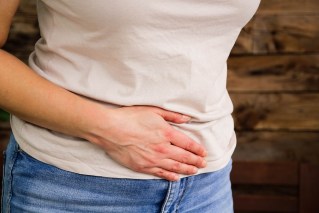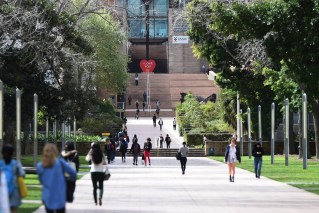New hope for children with rare leukaemia: ‘I knew this trial was her last chance of life’

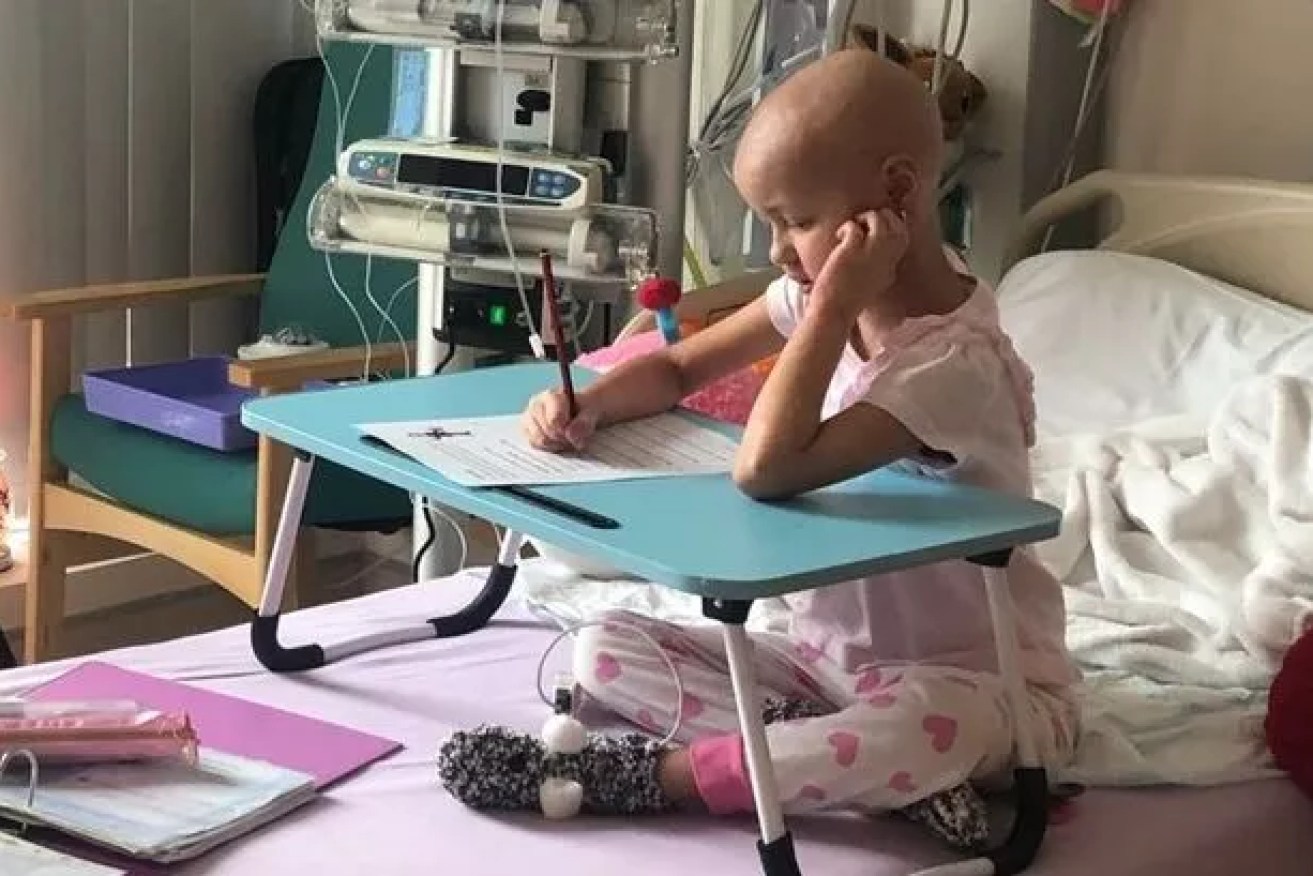
Sarah had exhausted all her treatment options for a rare, high-risk form of leukaemia. Photo: Manchester NHS Foundation Trust
British doctors have saved the lives of five children who were gravely ill with a rare, high-risk form of leukaemia.
Without experimental treatment, none would still be alive. They’re now in remission.
All other treatments, including chemotherapy and bone marrow transplants, had failed them.
The innovative treatment involves a transfusion of cord blood cells taken from donor placenta, along with a series of white blood cell transfusions. (More on that later.)
The researchers say this “provides the most-effective treatment ever trialled”.
The trial has been expanded to recruit more young patients following the promising results so far.
And one little girl’s family are daring to hope that, after a year in remission, her leukaemia is cured.
Sarah’s story
Simona Marica was a nurse working in Cornwall and recognised the difference between bad news and catastrophe.
When her then four-year-old daughter Sarah was diagnosed with acute myeloid leukaemia (AML), she began to cry. AML is rare and hard to treat.
“She had to start chemotherapy immediately as her blood results were so bad, she could have died at any time,” said Simone, in a statement from Royal Manchester Children’s Hospital (RMCH).
After finishing six months of chemotherapy, Sarah went into remission, and the family felt they were returning “to a kind of normal life”.
That was in 2019. But in February 2020 the leukaemia returned.
Sarah had a second round of chemotherapy. And her 10-year-old brother donated his bone marrow (they were a match). Sarah underwent a stem cell transplant and went into remission for 18 months.
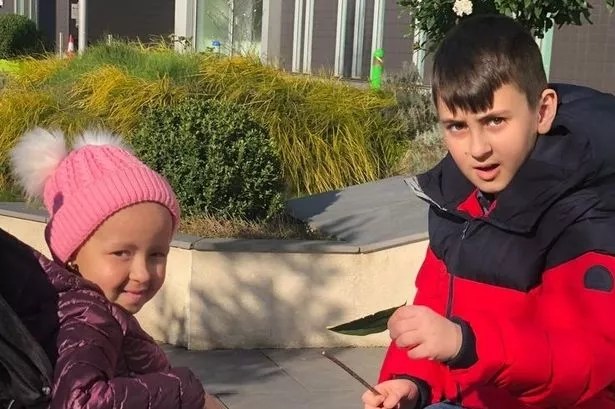
Sarah’s brother David was a bone marrow match. Photo: Manchester NHS Foundation Trust
When the cancer returned, Sarah’s doctors in Bristol began talking about her potential for joining the trial, known as the GRANS study at Manchester.
Simona said: “As a nurse, I knew this trial was her last chance of life.”
So what is this disease again?
According to the Leukaemia Foundation: Acute myeloid leukaemia (AML) is not a single disease. It is the name given to a group of leukaemias that develop in the myeloid cell line in the bone marrow.
AML is characterised by an overproduction of immature white blood cells, but can occasionally occur in the red cell or platelet lines.
These cells crowd the bone marrow, preventing it from making normal blood cells. They can also spill out into the bloodstream and circulate around the body.
Inadequate numbers of red cells and platelets being made by the marrow cause anaemia, easy bleeding, and/or bruising.
About 50 children (0 to 14 years) are diagnosed with AML in Australia each year.
The five-year relative survival rate for children under the age of 15 with AML is 68 per cent.
For people aged 60 to 69 it’s 15 per cent.
The trial and the science behind it
Cord blood is the blood that remains in the placenta and umbilical cord of newborn babies.
It’s a treatment option for children with AML when chemotherapy has failed. But it’s risky.
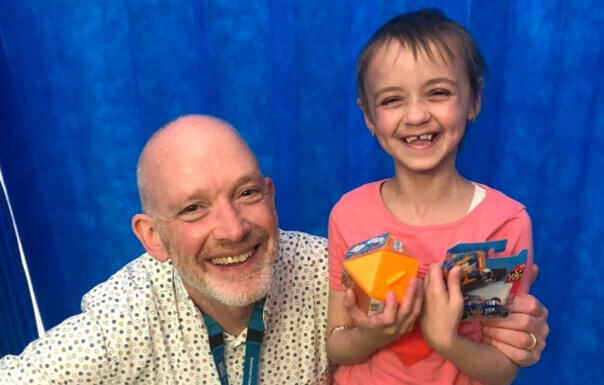
Professor Rob Wynn with Sarah.
However, stem cell transplants with newborn cord blood have been used to cure both children and adults with leukaemia since the early 1990s.
What was new in the study was the use of granulocytes. These are a type of immune cell that has granules (small particles) with enzymes that are released during infections, allergic reactions, and asthma. A granulocyte is a type of white blood cell.
As the RMCH researchers explain: Granulocytes have historically been given to patients with serious infections at the time of the transplant, to help the body’s fight against infection.
However, the researchers noticed where granulocyte transfusions were given during the early days after a cord blood transplant, the immune cells, known as T-cells, of the cord blood recovered much more quickly.
Furthermore, it’s T-cells that are known to best kill leukaemia cells.
In the GRANS study, the children were given seven transfusions of granulocytes around the time of their cord blood transplant.
Uniquely they were given to the children even if they did not have a serious infection – to deliberately increase the number of cord blood T-cells.
The researchers were looking at the effect of the white blood cell transfusions on the immune system recovery of the new cord blood.
The RMCH researchers found that children receiving a cord blood transplant, where chemotherapy was unsuccessful, “were almost five times more likely to be disease-free and GVHD-free compared to children who received other stem cell transplant options”.
What the researcher says
Professor Rob Wynn is consultant paediatric haematologist and director of Paediatric Bone Marrow Transplant Program at RMCH.
He said: “We know from our previous research, reported in the Blood Advances journal, that cord blood cells offer the most effective treatment for children with hard-to-treat blood cancer.
“The GRANS clinical trial builds on this research and provides a treatment option for the sickest of children with AML, where no treatment options have been available.”
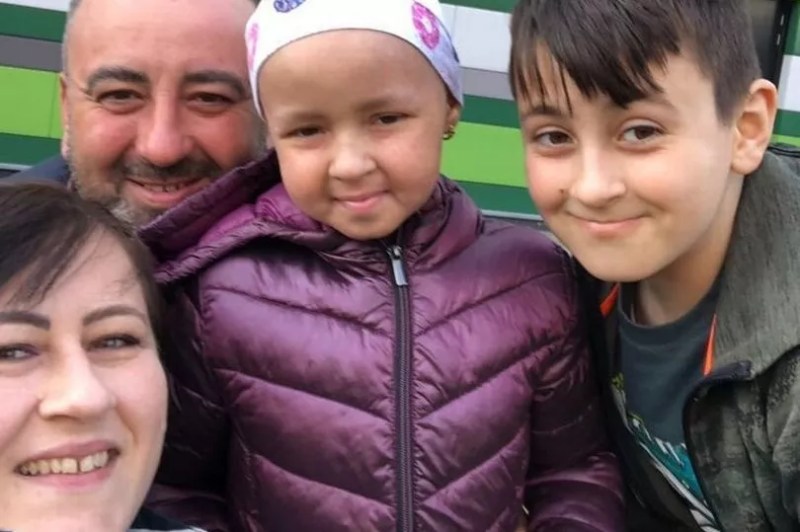
Sarah and family, looking to the future. Photo: Manchester NHS Foundation Trust
There were originally 10 children enrolled in the study. Half of them didn’t survive. They were simply too ill.
Professor Wynn said that Sarah was one of five children from the trial “who are alive and in remission as a result of this effective, experimental treatment”.
He said without this clinical trial, “it is unlikely that any of the children would still be alive”.
The initial results from the study have been published in the British Journal of Haematology.
Where’s Sarah now?
Sarah was four years old when she was first diagnosed with AML. She is now eight, and has been in remission for a year.
The researchers and her family “are hopeful that this novel treatment will have cured the leukaemia”.
Her mother Simona reflected: “Sarah has been through so much over the last few years, but she has been so brave. She has been my rock and she is such a cheerful, determined girl who loves school and playing with her friends.”
